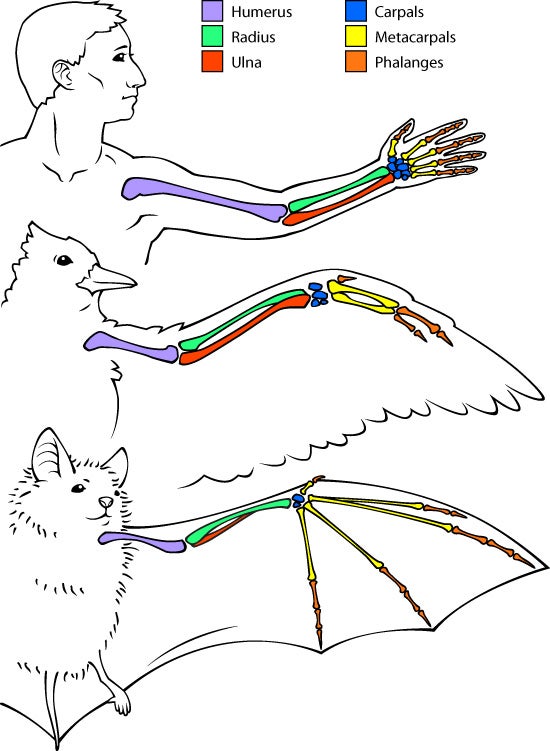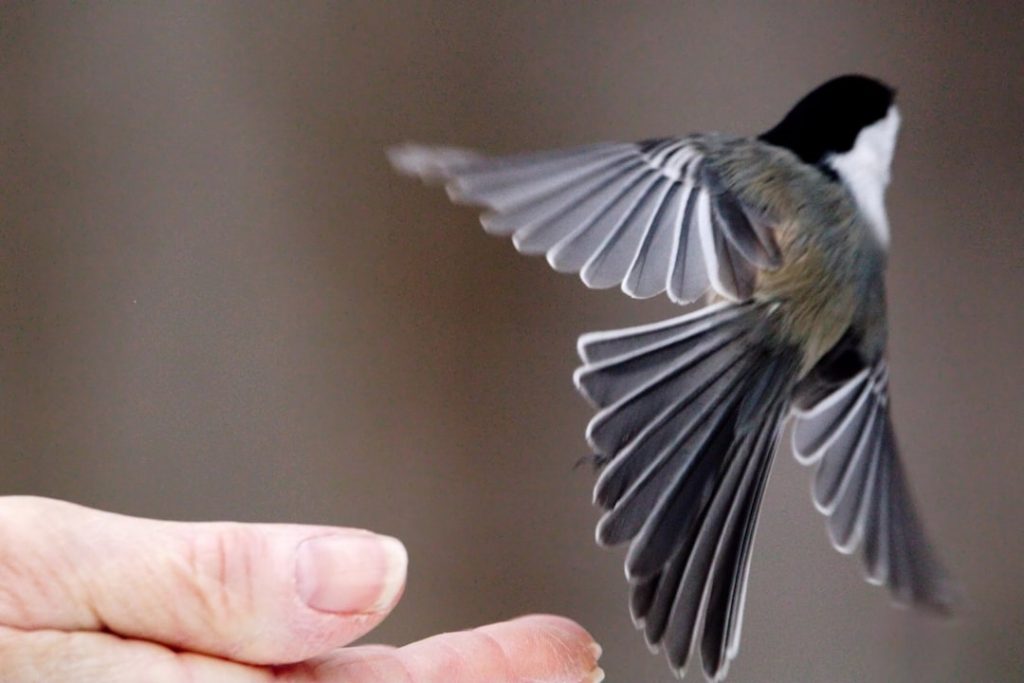Have you ever stopped to wonder if bird wings and insect wings are actually alike? At first glance, they both help creatures take to the sky, but are they really built the same way or do they work differently beneath the surface?
Understanding this could change how you see the natural world around you. Keep reading, and you’ll discover surprising facts that will make you appreciate the amazing designs of nature even more. Your curiosity is about to take flight!
Bird Wing Structure
Bird wings are complex structures designed for flight. They have unique features that help birds fly efficiently.
This section explains the bone anatomy, feather composition, and muscle arrangement of bird wings.
Bone Anatomy
Bird wings have hollow bones to reduce weight. These bones are strong yet light, allowing birds to fly longer distances.
- Humerus: the upper arm bone
- Radius and Ulna: the forearm bones
- Carpals and Metacarpals: the wrist and hand bones
- Phalanges: finger bones that support feathers
Feather Composition
Feathers cover the bird wing and help with flight and insulation. They are made of keratin, a strong protein.
| Feather Type | Function | Location |
| Primary Feathers | Provide thrust | Wing tips |
| Secondary Feathers | Provide lift | Middle wing |
| Coverts | Protect and smooth airflow | Wing surface |
Muscle Arrangement
Bird wings have strong muscles to move bones and feathers. These muscles help birds flap and control their wings.
Major muscles in bird wings include:
- Pectoralis: powers the downstroke for flight
- Supracoracoideus: lifts the wing during the upstroke
- Deltoid: assists in wing rotation and movement

Credit: en.wikipedia.org
Insect Wing Structure
Insect wings are different from bird wings in many ways. They have unique parts that help them fly.
Understanding insect wings helps us see how they work and why they are special.
Exoskeleton Framework
Insect wings have a hard outside frame called the exoskeleton. This frame gives the wings strength.
The exoskeleton has veins that support the wing and carry fluids. These veins keep the wing shape stable.
- Veins form a network like a skeleton
- Exoskeleton is made of a material called chitin
- It protects the wings and helps them move
Wing Membranes
The wing membranes are thin and flexible layers stretched between the veins. They are usually transparent.
These membranes help insects catch the air for flying. They are light but strong enough for flight.
- Thin layers of skin between veins
- Lightweight and flexible for easy movement
- Can have colors or patterns for camouflage
Muscle Mechanism
Insect wings move using special muscles inside the body. These muscles work quickly to flap the wings.
The muscles connect to the wing base and change shape to make the wings go up and down.
- Muscles are inside the insect’s thorax
- They pull on the wing base to flap wings
- Fast muscle movement allows quick flight
Evolutionary Origins
Bird wings and insect wings both allow flight. They look alike but have different origins.
This article explores how bird wings and insect wings evolved over time. We focus on their development and evolution.
Bird Wing Development
Bird wings come from the forelimbs of ancient reptiles. Over millions of years, these limbs changed for flight.
Bird wings have bones similar to arms and hands. Feathers grew on these limbs to help with flying.
- Bird wings have bones like humerus, radius, and ulna.
- Feathers develop from skin cells on these bones.
- Muscles and joints allow birds to flap their wings.
- Bird wings evolved for gliding, then powered flight.
Insect Wing Evolution
Insect wings are different from bird wings. They do not have bones and come from the body’s outer skin.
| Feature | Bird Wings | Insect Wings |
| Origin | Forelimbs of reptiles | Outgrowths of body wall |
| Structure | Bone and feathers | Thin membranes with veins |
| Movement | Muscles inside wing | Muscles in thorax |
| Evolution | From limbs for flight | From skin extensions |
Credit: smartachievers.online
Functional Differences
Bird wings and insect wings both enable flight but work in different ways. Their structures and functions show many contrasts. Understanding these helps us see how nature solves flying challenges.
This section looks at three main areas: flight mechanics, wing flexibility, and energy efficiency. Each shows how bird and insect wings differ in function.
Flight Mechanics
Bird wings use strong muscles to flap large feathers in a steady motion. This creates lift and thrust for smooth, controlled flight. Insects move their wings faster and in complex patterns to stay airborne.
- Bird wings have bones and feathers for strength and shape.
- Insect wings are thin and membranous without bones.
- Birds flap wings up and down mostly.
- Insects often move wings in a figure-eight or back-and-forth.
- Bird flight is usually slower but more powerful.
- Insect flight is faster and more agile.
Wing Flexibility
Bird wings can fold and adjust shape using their joints and feathers. This helps in gliding and quick turns. Insect wings are more rigid but can twist slightly to control flight direction.
| Feature | Bird Wings | Insect Wings |
|---|---|---|
| Structure | Bones with feathers | Membranous with veins |
| Flexibility | High, can fold and spread | Moderate, slight twisting |
| Control | Adjust feathers for lift and drag | Change wing angle for direction |
| Durability | Strong but can wear out | Delicate but lightweight |
Energy Efficiency
Birds use energy efficiently by gliding and flapping with muscle power. Insects use rapid wing beats, which need quick energy bursts but less overall muscle mass.
Energy use comparison:
- Birds:Large muscles store energy during wing upstroke.
- Insects:Fast wing beats powered by direct muscle contractions.
- Birds:Can soar to save energy for long flights.
- Insects:Hover and dart quickly but tire faster.
Analogous Traits Explained
Analogous traits are features that look similar in different species. These features evolve independently.
Bird wings and insect wings are examples of such traits. They serve the same function but have different origins.
Convergent Evolution
Convergent evolution happens when different species develop similar traits. This occurs because they live in similar environments.
- Bird wings evolved from the limbs of reptiles.
- Insect wings developed from extensions of the exoskeleton.
- Both serve the purpose of flight but have different structures.
- This shows how nature solves the same problem in different ways.
Adaptive Advantages
Analogous traits help species survive better in their habitats. Wings allow animals to escape predators and find food.
| Species | Wing Origin | Purpose |
| Birds | Forelimbs of reptiles | Flight and balance |
| Insects | Exoskeleton extensions | Flight and mating displays |
Comparing Bird And Insect Wings
Bird wings and insect wings are both used for flying. They help animals move through the air. Yet, these wings are very different in many ways.
Understanding how bird and insect wings differ helps us learn about nature’s design. These differences affect how they fly and behave.
Structural Contrasts
Bird wings are made of bones, muscles, and feathers. They have a strong skeleton inside to support flight.
Insect wings are thin and made of a membrane stretched over veins. They do not have bones but use muscles in the body to move the wings.
- Bird wings have bones and feathers.
- Insect wings have no bones, only membranes.
- Bird wing muscles attach to bones.
- Insect wing muscles control wing movement from the body.
Behavioral Impacts
Bird wings allow strong, long flights and gliding. Birds can soar high and cover large distances.
Insect wings beat very fast. This lets insects hover and change direction quickly. Their wings help them escape predators.
- Birds fly long distances and glide.
- Insects hover and move fast in many directions.
- Bird flight is powered by large muscles.
- Insect flight uses quick wing beats controlled by body muscles.
Nature’s Design Insights
Bird wings and insect wings look similar but work differently. Both help animals fly. Scientists study them to learn about nature’s clever designs.
These wings are examples of analogous structures. They evolved separately but serve the same purpose. Understanding this helps us create better technology.
Biomimicry Applications
Bird and insect wings inspire many tools and machines. Their shapes and movements show how to use less energy for flying and moving.
- Design of drones that hover like insects
- Development of lightweight aircraft wings
- Creation of flexible wing materials
- Improvement of wind turbine blades
Technological Innovations
Engineers use data from bird and insect wings to build new flying devices. They study wing shape, motion, and structure for better results.
| Wing Type | Material | Flight Style |
| Bird Wings | Feathers | Flapping, Gliding |
| Insect Wings | Chitin | Fast Flapping |
| Tech Models | Carbon Fiber, Polymers | Hovering, Gliding |

Credit: www.reddit.com
Frequently Asked Questions
Are Bird Wings And Insect Wings Analogous Structures?
Yes, bird wings and insect wings are analogous. They perform similar functions but evolved independently in different species.
How Do Bird Wings Differ From Insect Wings?
Bird wings have bones and feathers, while insect wings are made of membranes supported by veins. Their structures are fundamentally different.
Why Are Bird And Insect Wings Not Homologous?
Bird and insect wings do not share a common evolutionary origin. They developed separately through convergent evolution.
What Is The Main Function Of Bird And Insect Wings?
Both bird and insect wings enable flight. They help in movement, escaping predators, and finding food.
Conclusion
Bird and insect wings look similar, but they are not the same. Birds have wings with bones, while insects have wings made of membranes. Both fly, but they evolved differently. Nature often creates similar solutions for different creatures. This is called “analogy.
” Wings are a great example. Understanding these differences helps us learn about evolution. It also shows the amazing diversity of life on Earth. Nature always finds unique ways to solve problems. Wings are just one of those fascinating solutions.
So, next time you see a bird or insect, notice their wings. They’re more different than they seem.

